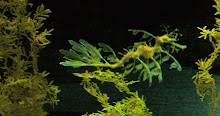Primatologists studying chimpanzees often talk about examples of chimps using forest objects as tools, with one of the most famous examples being their use of rocks to crack nuts. This tool-use is considered a kind of culture, because there are regional variations in it and because young chimps learn to use the tools from the adults. Until this month, the "nut-cracking culture" had only ever been found in chimp troupes in Western Africa, specifically west of the river N'Zo-Sassandra in the Ivory Coast. It was thought that the river was a barrier, preventing the knowledge spreading to chimp groups further East. Research published in the journal Current Biology this month, however, overturns this idea.
The scientific paper, by Bethan Morgan and Ekwoge Abwe, reports nut cracking behaviour in the endangered chimpanzee subspecies, Pan troglodytes vellerosus, which is restricted to Western Cameroon and parts of Nigeria: some 1700km East of the N'Zo-Sassandra river. In the study, conducted in Cameroon's Ebo forest, the researchers observed 3 adult chimps sitting in the branches of the "Tigerwood", or "Gabon nut" tree and using rocks to crack the nuts. The tree has red or green coloured nuts, which are similar in shape and size to walnuts and have exceptionally tough shells. One of the chimps, realising he was being watched, dropped his tool: a grape-fruit sized lump of quartz: to the ground as he fled and the researchers found other discarded rocks and nut shells on the surrounding forest floor.
The fact that this behaviour has been found in a population so far removed from the others overturns existing wisdom and suggests that the nut-cracking behaviour has arisen separately in many chimp populations throughout Africa. Alternatively, it may be an ancient pan-African chimp "culture" that has been lost by the populations between Ebo forest and the N'Zo-Sassandra river.
Bethan Morgan and Ekwoge Abwe's study of chimpanzees was published in Volume 16 (No16) of the journal Current Biology
Friday, 25 August 2006
Nutty Chimps- Science News
Labels:
Abwe,
chimpanzee,
Current Biology,
Morgan,
tool use,
Western Africa
Subscribe to:
Post Comments (Atom)









No comments:
Post a Comment